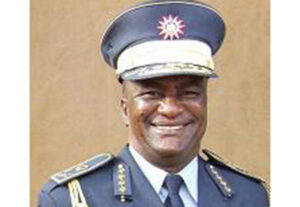Human Trafficking, the Hidden Crime – Namibian
JB TJIVIKUA

THE INTERNATIONAL Labour Organisation (ILO) defines human trafficking as the recruitment, transportation, transfer, harbouring or receipt of people through force, fraud, and deception, with the aim of exploiting them for profit.
Men, women and children of all ages and from all backgrounds can become victims of this crime, which occurs worldwide.
It is the trade of humans in order to benefit from their forced labour, sexual slavery, or commercial sexual exploitation.
Rudimentary evidence would confirm reports that this phenomenon is slowly rearing its ugly head in Namibia.
Traffickers often use violence or fraudulent employment agencies and fake promises of education and job opportunities to lure and coerce unsuspecting victims.
Human trafficking can occur within a country or transnationally. It is a violation of a victim's rights of movement through coercion and commercial exploitation.
People smuggling or human smuggling or migrant smuggling are related practices, characterised by the consent of the person being smuggled.
This descends into human trafficking through coercion and exploitation, with people forced to work or to provide services to the traffickers or others.
The three most common types of human trafficking are sex trafficking, forced labour, and debt bondage.
Globally, forced labour, also known as involuntary servitude, is the biggest trafficking sector.
MAIN CAUSES
The root causes of human trafficking are many and can differ from country to country. Common factors include people wanting to migrate in search of better living conditions away from poverty, unemployment, oppression, lack of human rights, lack of social and economic opportunities, conflict or instability, civil war and civil unrest, etc.
The destabilisation and displacement of populations increase victims' vulnerability to exploitation and abuse through trafficking and forced labour.
Traffickers might use violence, manipulation, or false promises of well-paying jobs or romantic relationships to lure victims.
They look for people who are susceptible for a variety of reasons – psychological, emotional vulnerability, economic hardship, natural disasters, or political instability.
The trauma caused by the traffickers can be so great that many do not necessarily identify themselves as victims or ask for help, even in public settings.
Language barriers and fear also frequently keep victims from seeking help, making human trafficking a corrosive and largely hidden crime.
In addition, porous borders, corrupt officials, and organised international criminal groups or networks are among factors that facilitate human trafficking.
INDICATORS
As human trafficking is often hidden in plain sight, it is important to recognise red flags.
Victims can appear malnourished, show signs of physical injuries and abuse, avoid eye contact, and appear to adhere to rehearsed responses in social interactions, lack official identification documents, and work excessively long hours, etc.
Traffickers also employ control tactics, most commonly physical and emotional abuse and threats, isolation from friends and family members and economic abuse.
According to the ILO, forced labour generates an estimated US$150 billion a year (as of 2014).
The ILO also estimates that there are 40,3 million victims of human trafficking globally.
Human trafficking is condemned as a violation of human rights by international conventions, such as the United Nations Protocol to Prevent, Suppress and Punish Trafficking in Persons, known as the Palermo Protocol, an international agreement under the UN Convention against Transnational Organised Crime (CTOC).
The Palermo Protocol is the first legally binding global instrument on trafficking in more than half a century. One of its purposes is to facilitate international cooperation in investigating and prosecuting such trafficking.
Another is to protect and assist victims with full respect for their rights as established in the Universal Declaration of Human Rights. In Namibia, the Prevention of Organised Crime Act (2004) criminalises trafficking in people.
Suspicious activities indicating human trafficking must be duly reported to the law enforcement authorities.
However, no attempts should be made to confront a suspected trafficker, or to alert a victim to any suspicions.
Most prevention strategies fall within one of the following categories: reducing the vulnerability of potential victims through social and economic development, discouraging the demand for the services of those trafficked, public education, border control, and preventing the corruption of officials. Vigilance is the key to prevention.
* Major general JB Tjivikua served in the Namibian Police for 27 years.
This “Eyes on Trafficking” story is reprinted from its original online location.

ABOUT PBJ LEARNING
PBJ Learning is a leading provider of online human trafficking training, focusing on awareness and prevention education. Their interactive Human Trafficking Essentials online course is used worldwide to educate professionals and individuals how to recognize human trafficking and how to respond to potential victims. Learn on any web browser (even your mobile phone) at any time.
More stories like this can be found in your PBJ Learning Knowledge Vault.
EYES ON TRAFFICKING
This “Eyes on Trafficking” story is reprinted from its original online location.
ABOUT PBJ LEARNING
PBJ Learning is a leading provider of online human trafficking training, focusing on awareness and prevention education. Their interactive Human Trafficking Essentials online course is used worldwide to educate professionals and individuals how to recognize human trafficking and how to respond to potential victims. Learn on any web browser (even your mobile phone) at any time.
More stories like this can be found in your PBJ Learning Knowledge Vault.
